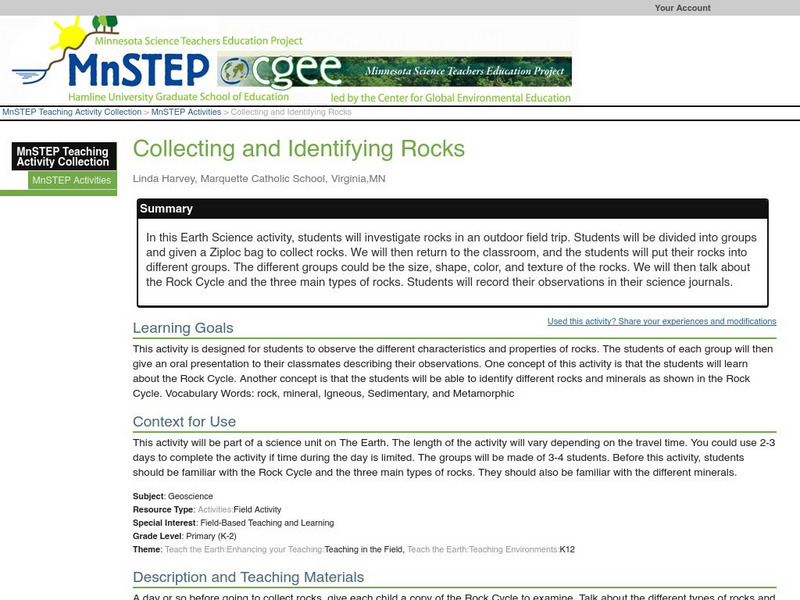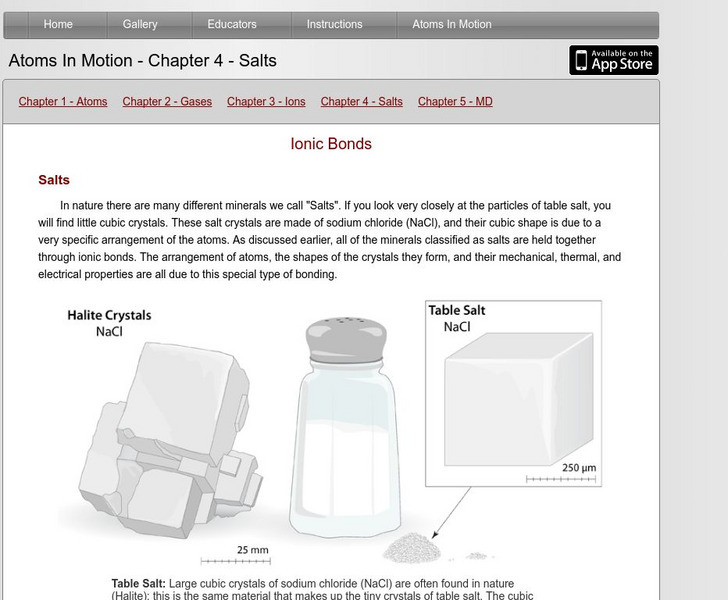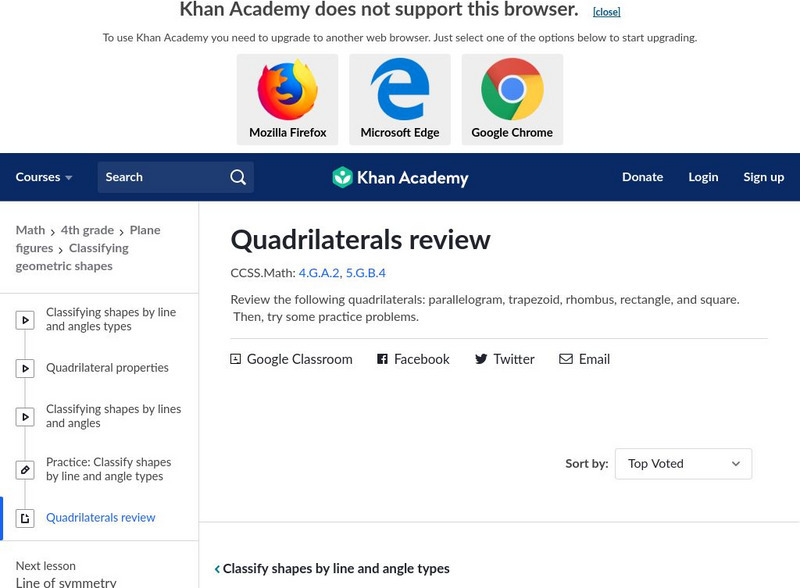Hi, what do you want to do?
NASA
Nasa: Aerial Photography: The Adventures of Amelia the Pigeon
An animated adventure story, developed by NASA, that helps children understand earth science concepts by using satellite photography and other types of aerial photographs to identify physical features on the surface of the earth. Teaches...
Children's Museum
The Children's Museum of Indianapolis: Dinosphere
Students will learn how dinosaurs were classified, compare shapes and sizes, and explore how paleontologists make discoveries. They'll analyze how dinosaurs interacted back in the day, and make their own dinosaur drawings and a fossil cast.
Khan Academy
Khan Academy: Constructing Triangles
Practice constructing triangles. Students receive immediate feedback and have the opportunity to try questions repeatedly, watch a video or receive hints.
San Diego Natural History Museum
San Diego Natural History Museum: Mineral Matters: Grow Your Own Crystals
Here are step-by-step instructions on how to create crystals. This is a great experiment for students to use in learning about the structure and formation of crystals.
CK-12 Foundation
Ck 12: Parallelogram Classification
[Free Registration/Login Required] Students will use the classify different shapes by changing the points on the given shape. Click learn more to watch a video and click challenge me to answer a practice question.
Science Education Resource Center at Carleton College
Serc: Collecting and Identifying Rocks
Students investigate rocks in an outdoor field trip, and then place them into groups by characteristics. The different groups could be the size, shape, color, and texture of the rocks. After classifying, students are introduced to the...
BiologyWise
Biology Wise: List of Bacteria
Describes the structure of bacteria, where bacteria can be found, and how they are classified using gram staining. Includes lists of bacteria organized by gram staining response and whether they have a capsule shape. Also includes a list...
Alabama Learning Exchange
Alex: It's in the Bag
This activity is a unique and fun way to review perimeter, angles, and types of adjectives. Students pick an object from the classroom that will fit in a paper lunch bag. They investigate their object and fill in the attached sheet. You...
Other
Ohio Resource Center: Shadows
This applet helps students visualize the shapes of shadows cast by a cube with a light coming from different angles. This helps students visualize shapes from different angles and to identify, sketch and classify the cross-sections of...
Other
Atoms in Motion: Ionic Bonds
In nature there are many different minerals we call "Salts". If you look very closely at the particles of table salt, you will find little cubic crystals. These salt crystals are made of sodium chloride (NaCl), and their cubic shape is...
Khan Academy
Khan Academy: Quadrilaterals Review
After reviewing the properties of different quadrilaterals, students answer questions about each type.












